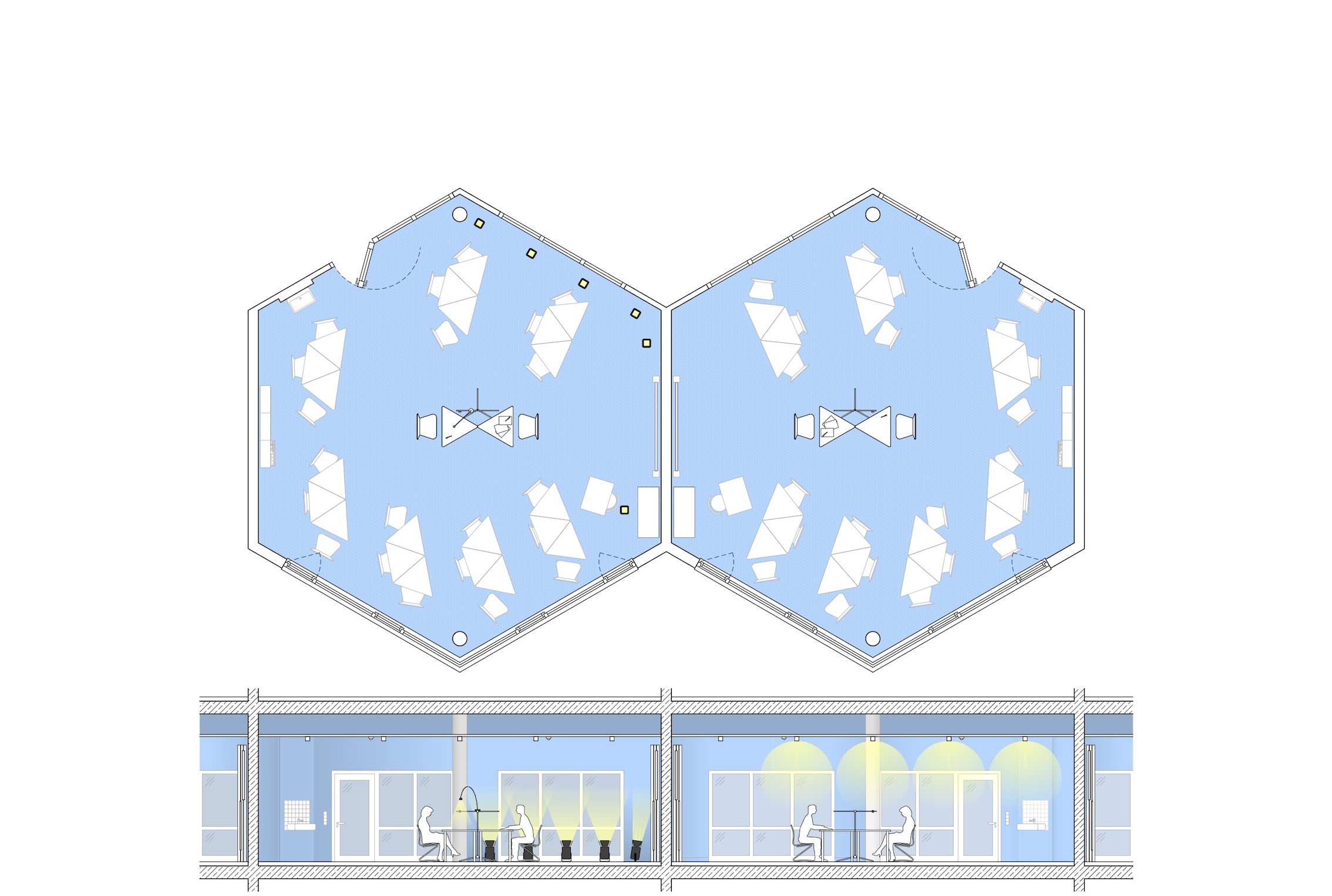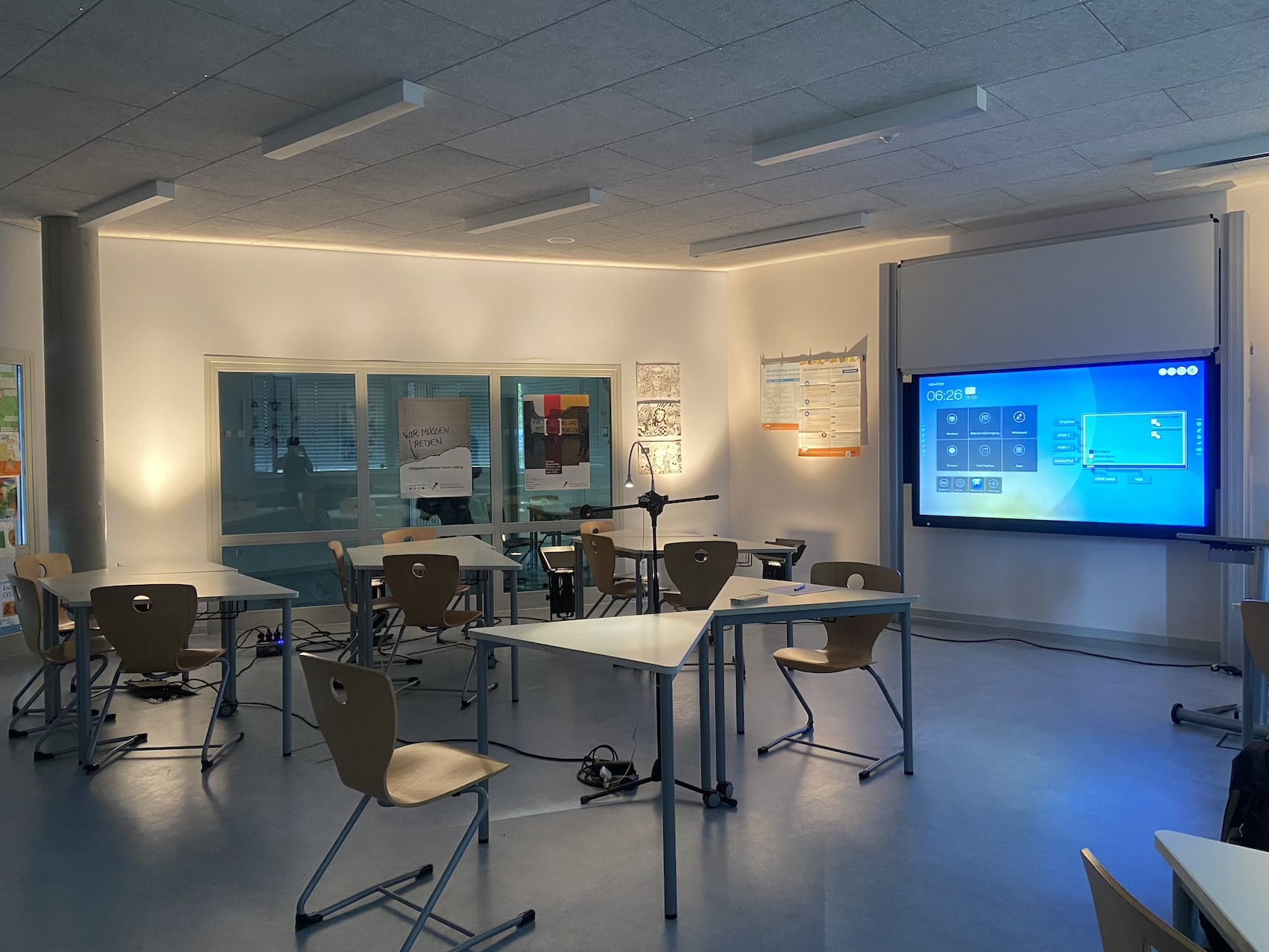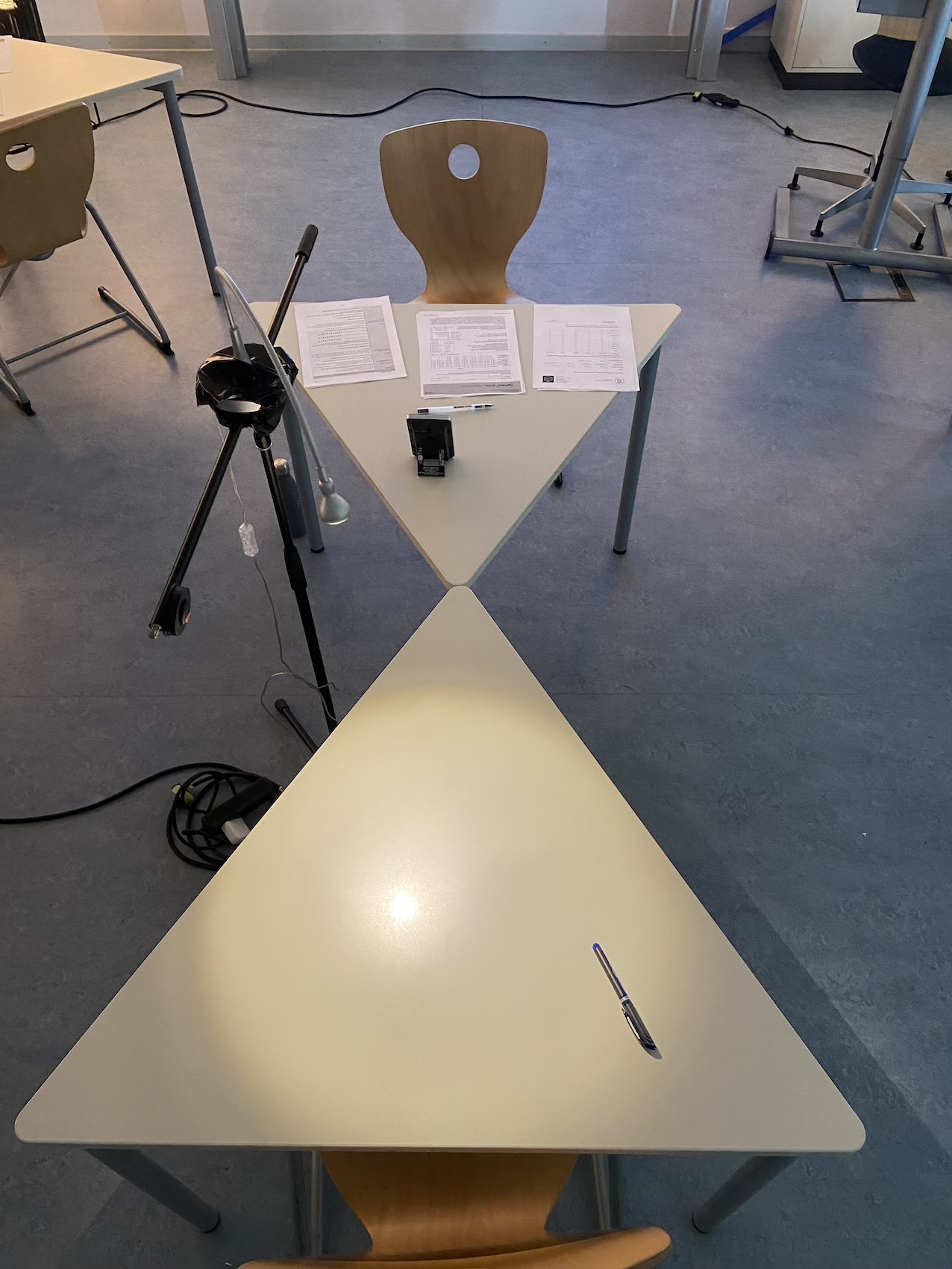
Case study: The Impact of Artificial Light on Students in Classrooms
The Impact of Artificial Light Distribution and Surface Colour on Students in Classrooms
Master Thesis · Case Study at a German Grammar School
Emil Rohde
Thesis Project Design
M.Sc. Architectural Lighting Design
KTH Royal Institute of Technology
PhD Federico Favero · Head of Division of KTH Lighting Design
01 Apr 2024
Artificial lighting has been found to influence humans in a visual and non-visual, physiological and psychological manner. It affects task performance, learning behaviour and emotional state. Such relations, however, are primarily examined regarding colour temperature, illuminance, and spectral power distribution of the light, but not its spatial distribution. This thesis therefore investigates the impact of light distribution and surface colours on cognitive functions and perception in secondary school students. Participants are surveyed in a written examination environment with a neuropsychological screening test and a questionnaire. For the investigation, hexagonal classrooms with different accent colours, blue and yellow, and two different light distribution scenarios are chosen. Results indicated that an altered, dynamic light distribution in a mock-up scenario led to an enhanced perception of pleasantness compared to the existing, uniform classroom lighting. However, ratings of emotional state showed less beneficial results in the mock-up lighting. Furthermore, no improvement of cognitive task performance in the mock-up lighting was found. Generally, yellow investigation environments were rated more pleasant and beneficial for alertness than blue ones. Although this study generates several hypotheses, making generalisations about the contribution of light distribution and surface colour to effective learning environments beneficial for well-being and performance requires further investigation.




